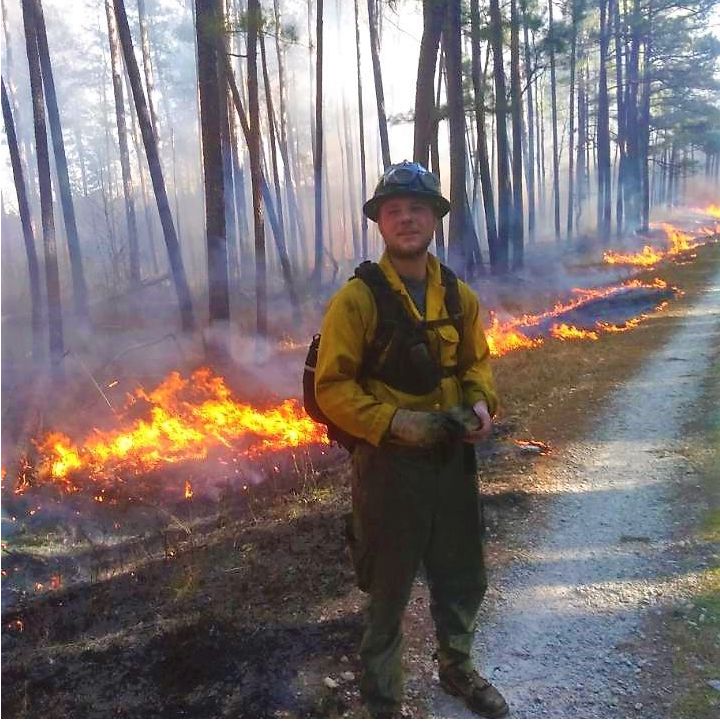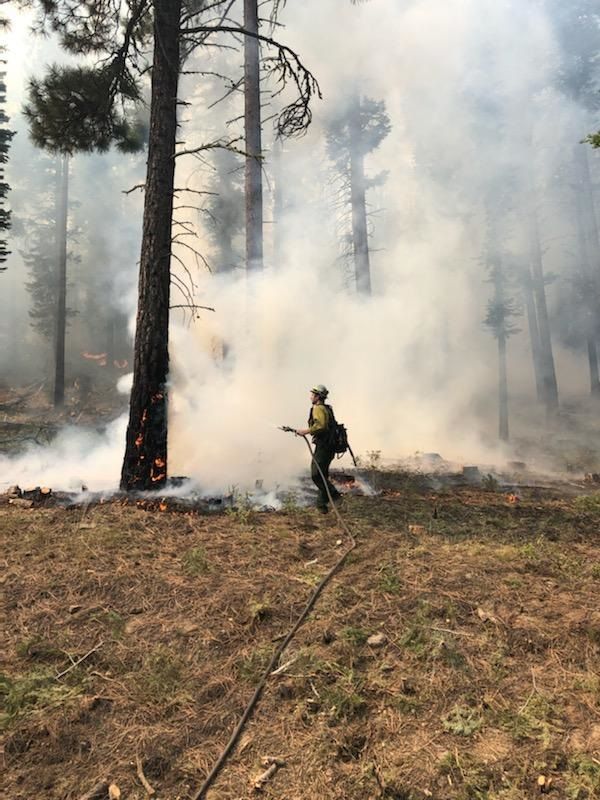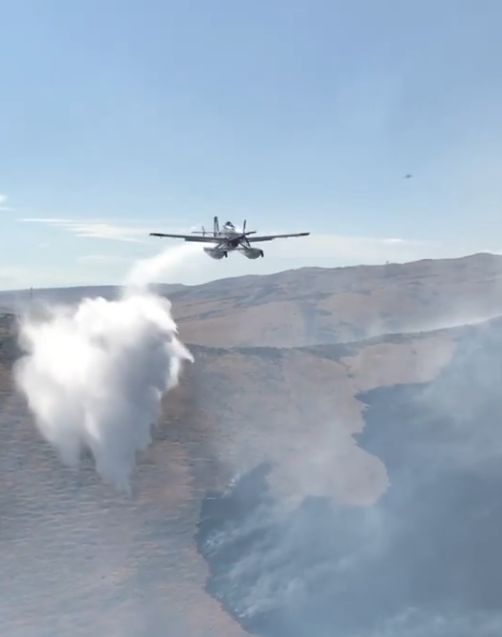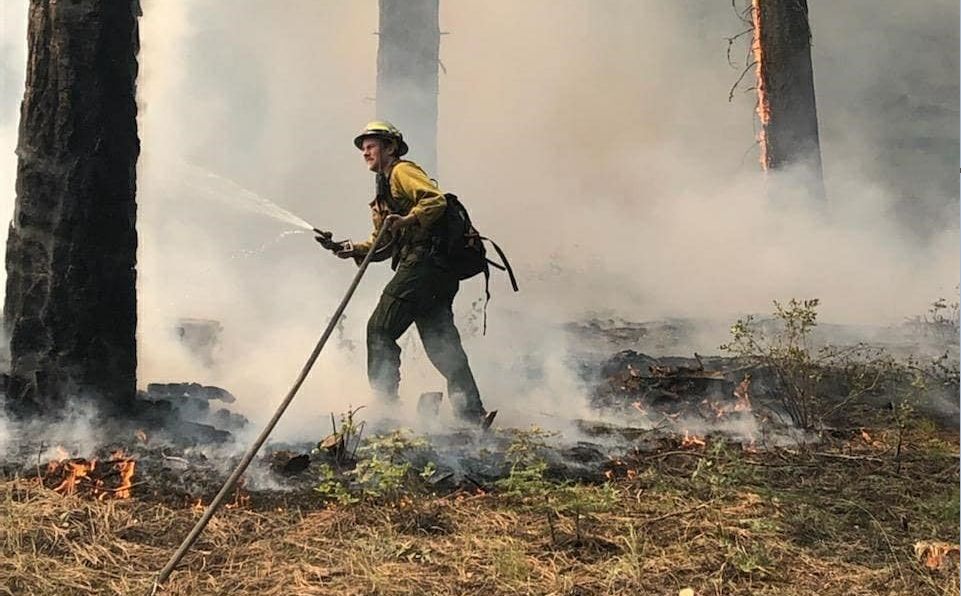NEENAH, Wis. — The choice was a comfy desk job whose biggest peril would be a paper cut, or the career with the job description that read like this:
“Must be able to adequately perform job while working in thick, black smoke. Must be mindful of possible large burnt out trees that could topple at any moment. Must be cognizant of possible heavy tree branches falling from above. Must be adept at avoiding deadly snakes and insects. Must be able to execute all of the aforementioned tasks even when suffering from heat exhaustion and dehydration in the middle of a forest fire. This is a temporary position.”
Luke Pautz thought about it for maybe a minute, then decided he couldn’t let the latter opportunity pass him by.
“It’s a great, rewarding job,’’ said the 24-year-old Neenah native. “I don’t want to do anything else. But I see the other side of it. It’s not for everyone.’’
Pautz is a wildland firefighter, who spent part of this summer fighting wildfires in Oregon and Washington.

“It’s like having a son in the military,’’ said his mom, Barb. “But this is his passion, and to serve. I am just so proud of him.”
*****
The goal when Luke enrolled in college was to pursue a career in environmental studies. But after a while, he came to believe that was a path to misery.
He wanted to be chained to the outdoors, not a desk.
It was Barb, who works at Fox Valley Technical College, who told Luke about the Wildland Firefighter program the school offered.
“It just made a lot of sense to me,’’ said Luke. “It’s a pretty high-risk environment but it involved some of my favorite things.
“You get to see parts of the country you would never even think to go if you didn’t work this job. Some of the views you get to see…. It’s a positive thing in my life at this point.”
*****
The oddity of this job is most of the people employed are seasonal, temporary hires. And they’re not savvy firefighters with years of experience to lean on. Quite the opposite.
“They’re hiring students in college, kids fresh out of high school, people that have been incarcerated that are trying to get back into the normal aspects of life,’’ said Jon Kellermann, the instructor of the Wildland Firefighter program at FVTC, who said about 70 percent of the wildland firefighting workforce is temporary hires.

“Based on some of the areas where the need is great, they can’t fill these positions with extremely qualified people. They have to bring in what they can; people who are willing.”
The national standards to be a Firefighter 2, which is the lowest rank, involves 45 hours of courses consisting of learning basic fire behavior, fire line safety and a leadership course, which details how the leadership role works within wildland firefighting and the role of a Firefighter 2. The courses consist of both in-class and hands-on instruction. They also have to pass a physical requirement where they must be able to walk three miles with a 45-pound backpack in under 45 minutes.
“It’s a pretty dangerous career that they’re getting themselves in to and we make it known that you’re putting yourself in harm’s way,’’ said Kellermann. “You’re putting yourself in greater danger than picking almost any other career that you possibly could do.”
*****
Luke’s first job after graduation came in Lakeview, Oregon, which was a pretty neat deal for someone who had previously never been west of Minnesota.
He started to gain experience partaking in a handful of initial attacks, which are the number of resources first dispatched to a wildfire and is determined by the location of the fire, the fuels (vegetation, timber, homes, etc.) in the area and the current weather conditions.
He has since been called to assist in fighting two larger fires; the Saddle Fire in Utah that burned nearly 10,000 acres and the Crane Fire near Lakeview, which has burned roughly 8,000 acres and continues to burn.

It was here where he got his initial taste of the uncertainties that can come with the job. After tracking up a mountain to fight the flank of the fire, the wind shifted and the group he was with had to move quickly.
“We had to go back down the mountain the way we came up, and into the black (smoke),’’ he said. “We had a good time, that’s how I remember it. But it was tiring.
You have to be mentally strong enough to push your body when it’s really uncomfortable and you’d just rather not. And it’s the mental aspect of knowing how to do things, the right way and the safe way.”
Today Luke is in Missouri working at the Mark Twain National Forest. Why he’s there is one of the dilemmas wildland firefighters face. He knows this could turn into a permanent position, where the benefits are better and the opportunity is there to invest in your future; not only financially but the chance to more quickly learn the skills to move up the wildland firefighter hierarchy.
But it’s not where the action is. Which is why, come next fire season (which usually runs from April through August), he wants to return out West to be on the front lines once more.
“I’m learning how to be a firefighter at this stage of my career,’’ Luke said. “There is a lot of wisdom through the years that I’m still looking to acquire.”
And there are personal challenges to be met.
He talks of one day becoming a member of a Helitack or Hotshot crew. Helitack crews are transported by helicopters and often rappel in to wildfires to quickly assess the situation and remain overnight in remote locations. Hotshot crews consist of a handcrew of about 20 wildland firefighters who respond to large, high-priority fires and are trained and equipped to work autonomously in remote areas for extended periods of time with little or no logistical support.
The physical and mental demands on these crews are the kind the majority of people will never experience, or would never want to.
But Luke Pautz never wanted the comfort of the corporate world.
“Part of me wants to give that a go to see if I can do it, really,’’ said Luke of one day joining a Helitack or Hotshot crew. “Just to see if I can push myself to do it.”



